I have a confession. I LOVE NFL football. That’s somewhat strange because I’m a Canadian female. We have our own professional league. I’m not sure if you knew that. Basically, it’s a lot of players who can’t play in the NFL. There is the occasional quarterback that has played 5 or so years in the CFL, and during that time completely dominates our league winning our “Super Bowl”, the Grey Cup, and then makes the jump to the NFL — Warren Moon, Joe Theisman, and Doug Flutie are some of the more notable ones. But there are also Canadian players too, of course, or it wouldn’t be the CFL.

But I love the NFL. I love the whole thing. I’m part of a survivor pool when football starts. I watch sports commentary shows. I understand what’s going on with every team. Every player. Right now, free agency and hiring season. Love it! And then the night before the draft. I watch Kevin Costner’s Draft Day. Love that movie. I love to see which team drafts well. The Jets were the superstars last year. That was amazing! I obviously love to see what my team does too; we don’t need a quarterback anytime soon.
I once told my husband the NFL is really just the male version of Desperate House Wives. It should be called The Real Lives of the National Football League. Always drama. Baker? Lamar? AB? Watson? Right now one of the most storied teams in NFL history is waiting for its quarterback to make his decision to play for them, another team, or retire in a dark room for the next 4 days. I could go on…
So to actually get to the post. I watch a lot of sports shows. And I’m always looking up commentators, and I usually end up on their Wikipedia page. I want to see if you’re a former football player and you know what you’re talking about, or if you’re a journalist. I frequently look to see if they won the whole shooting match and do they have the golden jacket. There’s a strip down the side with all their accomplishments. Their awards, pro bowl selections, MVPs and Super Bowls, and of course, if they’re in the Hall of Fame.
I also use it for all kinds of things. Sometimes I’m interested in players I know little about. Sometimes I’m comparing quarterback heights because I find it interesting how certain quarterbacks seem to play differently because of their height. Right before the Super Bowl, I learned how different the paths to the NFL the two Kelce brothers had. It’s all in Wikipedia. I’m guessing someone maybe wrote an article on it, but I’d have to Google, and to be honest, I wasn’t actually looking for that. I found it interesting that physically they are almost night and day different – and I lamented for their parents. Their grocery bills while those boys were teenagers must have been through the roof. One is a first ballot hall of fame centre – at 295 pounds and 6′ 3″ the other is an offensive weapon that is 6′ 5″ and weighs in around 250 – also a first ballot hall of famer.
My husband and I were talking about a former quarterback turned analyst and I asked my husband if he was a good quarterback. He did go to the Super Bowl. His passer rating was in the mid 70’s. Then to compare I looked up Tom Brady’s. And then Burrow’s. Mid-70’s is not going to get you into the hall of fame. As I looked at Burrow’s page. I looked at the bottom. It’s been recently updated. As recent as two weeks. I read through all of it. I know the story. There were a few things I learned. But there are actually things I could add. I would have to go find the source.
I remember when I was a kid when we did research we copied it out of the Encyclopaedia from the set we owned — word for word. That was our research. Our teachers had to have known it was copied word for word. I’m sure in our copied-back versions of the Beaver or the Ottoman Empire or whatever our 10-year-old selves were studying didn’t sound anything like our everyday language.
Will Richardson told me a number of years ago, there are as many errors in Wikipedia as there are in hard-copy Encyclopaedias. Wikipedia actually tried an experiment where they put errors in one of their articles -intentionally changed it. And over so many hours 3 or 6. They were changed back. After hearing this, I always allowed my students to use Wikipedia.
Free agency is about to open, Wikipedia changes are going to occur rapidly, some with great anticipation. And then, then Draft Weekend… Which means another wave of information is going to change in some what close to real time.
Here’s the rub How many times do we get kids to do REAL THINGS?
Our students all have a passion for something. They all love something. But let’s teach them how to research, take that passion, and use it for something real. Something the world can use like Wikipedia.
I don’t know who created the Joe Burrow page. Or who adds to it. Are they fans? Journalists? The day the Queen died, someone thought to add it to her page and decide what the reputable source was. Or the day Brady really retired. And someone will think to add whatever he transitions to next.
Sean Payton recently signed with Broncos, as their head coach. His page just changed, as did the Broncos. There are rumours that Rex Ryan might be his DC. Do you want to get kids interested in local events, in the world events, you already have guys who are excited about sports, and girls too.
More than the 5 Paragraph Essay
Can we ask more of our students than the 5 paragraph essay with 3 or 4 sources. Can we stop thinking so little of them? I once had students research enough to create a Holocaust Museum — that’s weeks of research. The greatest gift we have to offer our students is that we should be the best learners in the room. We should be able to help them learn how to learn, and how they best learn. I’ve written blog posts on these. Can they research and learn enough about their topic, and it can be something they really love to add to the world is some way? I once had two students, who loved NFL football. When they did the typical hero essay, he wrote about Kurt Warner. This kid knew everything about him. His story to the NFL. How he never gave up. Warner was still playing at the time. Now he has the gold jacket. But I bet my student could’ve added to his wiki page, and would’ve done so with enthusiasm.
Students do amazing work if they know others are going to see it
I’ve had students create a Holocaust museum that people came to visit for 3 days. I’ve had students raise over 22,000 to rebuild schools in wartorn countries. And they’ve made videos against slavery.
My English Curriculum states that it exists to:
Understanding how language works (e.g., discourse,
registers, sociolinguistic features and functions, cues
and conventions) and using purposefully “grammatical”
conventions for purpose and effect
Using visual, multimedia, oral, and written communication
competently, appropriately, and effectively for a range of
purposes,
Participating in, contributing to, and making connections
with the world beyond the classroom.
There are a whole lot of teachers who are missing the contributing and participating in the world beyond the classroom — that allow students to tap into what they like and help them begin to understand who they are.
In Wikipedia, there are pages changing all the time with news stories and current events, and biographies of people as they change. Some biographies and stories are incomplete and need more help. They tell you so. What if your classroom could be the one to help give authenticity to a page? Conversely, you may find errors and clear them up.
Is there something in your town/city that a Wikipedia page could be created for? Is there a festival you have? Something unique to your location — it can be a place, building or item that is historically significant. Let’s help our students give back to the world and be content creators, not just consumers.
Free agency opens March 15. NFL Draft Day opens April 27, 2023. We’ve seen mock drafts. We think we know how the draft is going to go. But we really don’t until it opens. Remember Pittsburgh taking their quarterback in the first round? And the Patriots first pick? 258 lives are going to be changed that day. You’ve got time to prepare your class. You’ve got time to look at previous bios. You’ve got time to look at what they used for their sources. Are you ready to jump and be part of history?

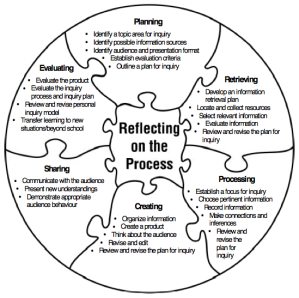
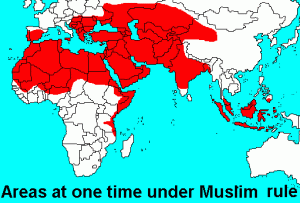
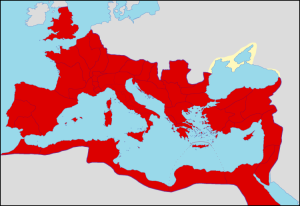
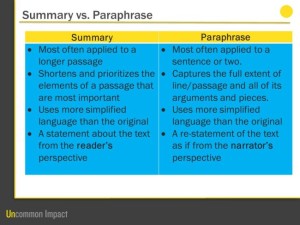
 I think for as long as teaching has existed, there’s likely always been “that” teacher. You know the one. The one riding out the last couple of years until retirement arrives. None of his students are really receiving the education they deserve, but nobody says much.
I think for as long as teaching has existed, there’s likely always been “that” teacher. You know the one. The one riding out the last couple of years until retirement arrives. None of his students are really receiving the education they deserve, but nobody says much.



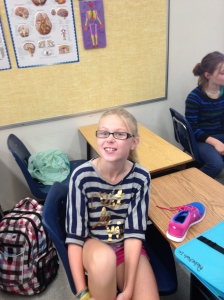 ate it when teachers call their students lazy. Or when they refer to having the class from “Hell”. When teachers say that do they really know what they’re saying? I’m offended when I hear that. I think a student’s parents would be offended to hear it. What about the students themselves? If a teacher thinks that poorly of their student or class, do we think that can be easily hidden?
ate it when teachers call their students lazy. Or when they refer to having the class from “Hell”. When teachers say that do they really know what they’re saying? I’m offended when I hear that. I think a student’s parents would be offended to hear it. What about the students themselves? If a teacher thinks that poorly of their student or class, do we think that can be easily hidden?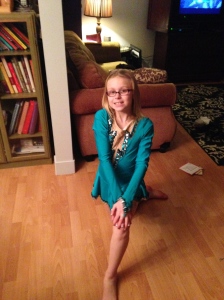 oject. She loves the project fair. Why? Because she can study things she cares about. For as long as I can remember, she has wanted to be a marine biologist. Poor girl. We live in a land locked province. Two years ago her project was on dolphins. Last year, sharks. This year the coral reef. She’s excited about designing one. Bored? Yes. Lazy? No. She reads voraciously. She’s read the Harry Potter series. The Hunger Games. And is just finishing the last Percy Jackson book. She just turned 10. But she never talks about what she reads in school. Is she lazy? No. Bored? Yes. This is the same girl who figure skates 4 times a week; twice a week this requires her to get up at 6:30 in the morning. She has a variety of interests, but school rarely touches on them.
oject. She loves the project fair. Why? Because she can study things she cares about. For as long as I can remember, she has wanted to be a marine biologist. Poor girl. We live in a land locked province. Two years ago her project was on dolphins. Last year, sharks. This year the coral reef. She’s excited about designing one. Bored? Yes. Lazy? No. She reads voraciously. She’s read the Harry Potter series. The Hunger Games. And is just finishing the last Percy Jackson book. She just turned 10. But she never talks about what she reads in school. Is she lazy? No. Bored? Yes. This is the same girl who figure skates 4 times a week; twice a week this requires her to get up at 6:30 in the morning. She has a variety of interests, but school rarely touches on them.
 ✓ We create learning environments that are carefully crafted, receptive, still, intuitive, unhurried, patient, reflective, quality-over-quantity and engaging.
✓ We create learning environments that are carefully crafted, receptive, still, intuitive, unhurried, patient, reflective, quality-over-quantity and engaging. ✓ We replace our egg-carton grades with flexible, personalized learning that takes into account when students are ready to engage in and acquire important skills.
✓ We replace our egg-carton grades with flexible, personalized learning that takes into account when students are ready to engage in and acquire important skills.
